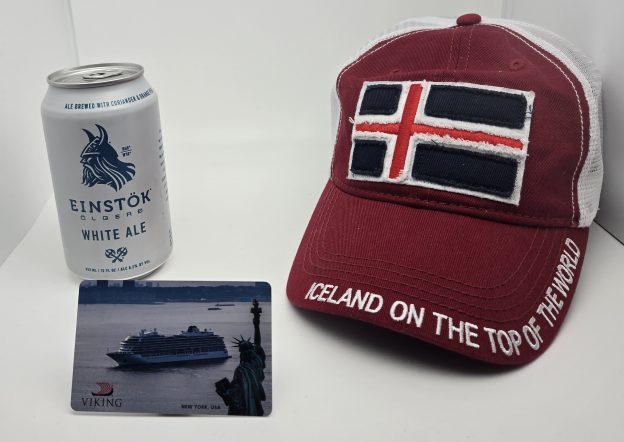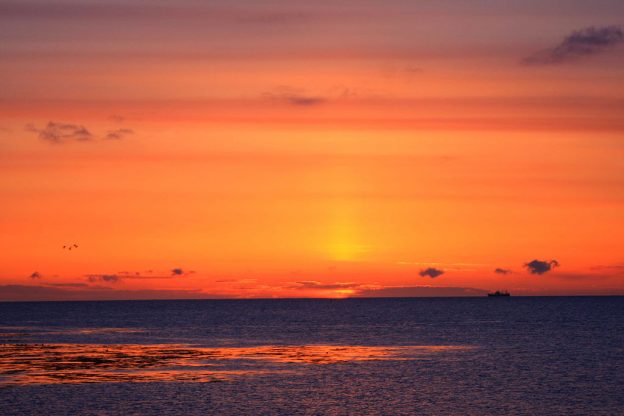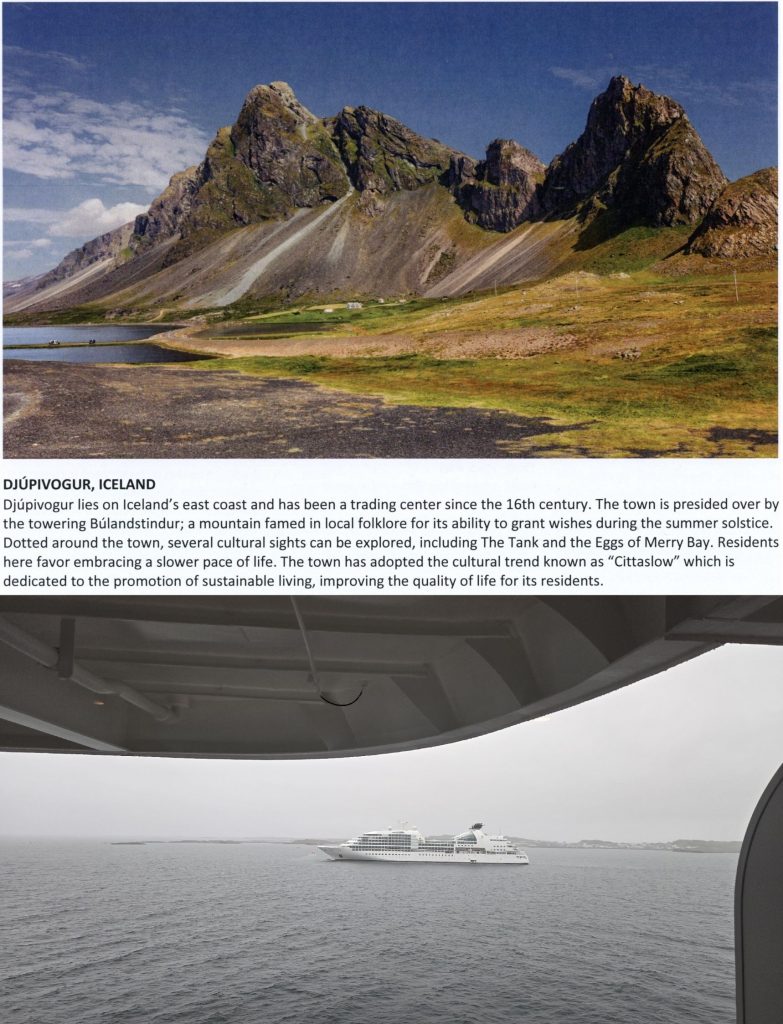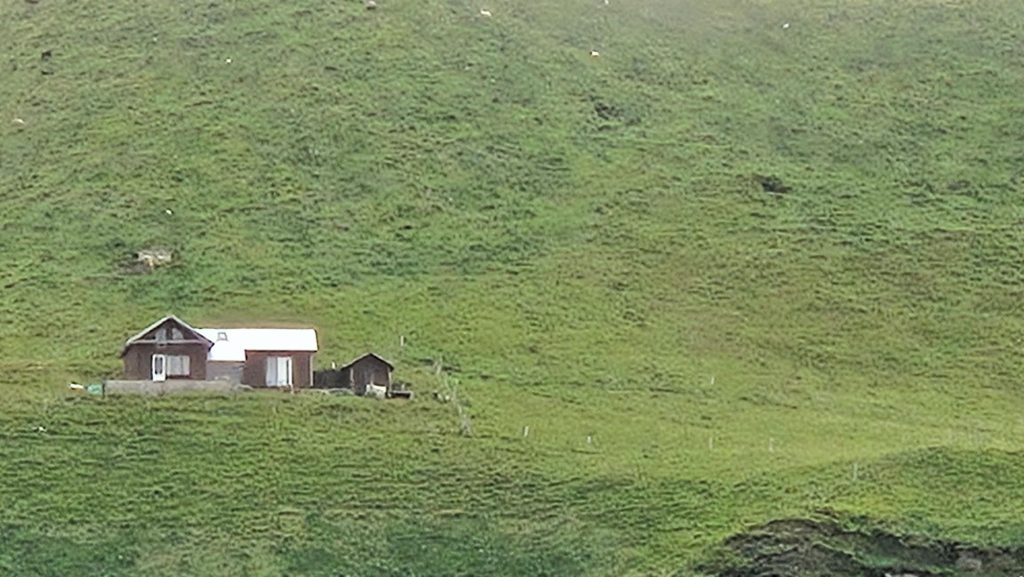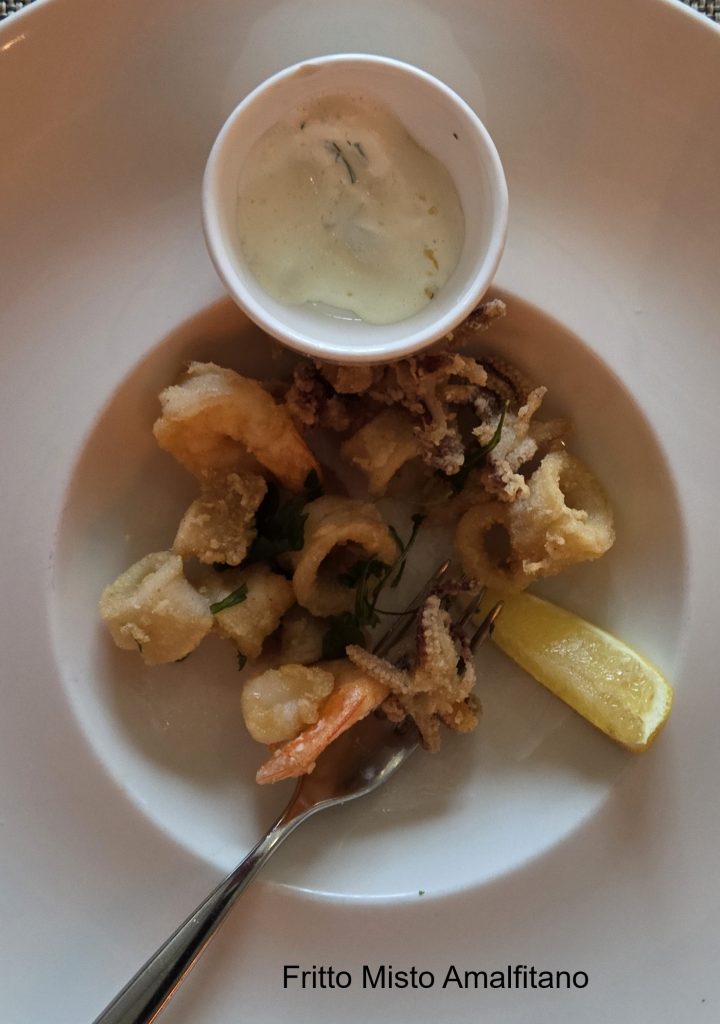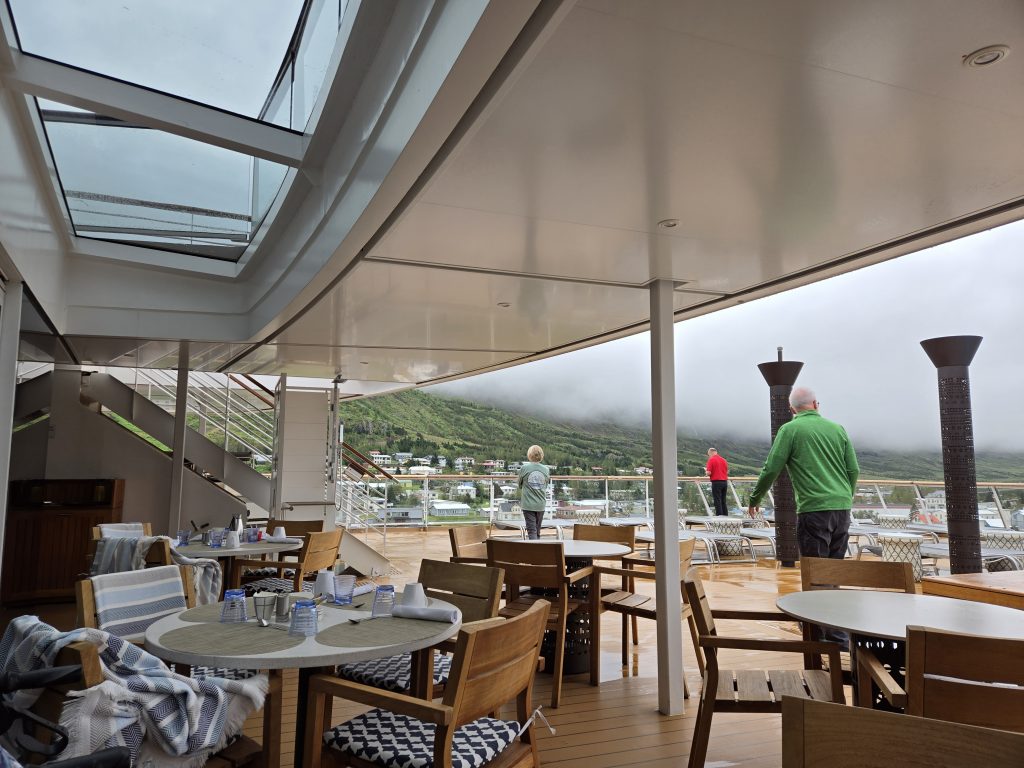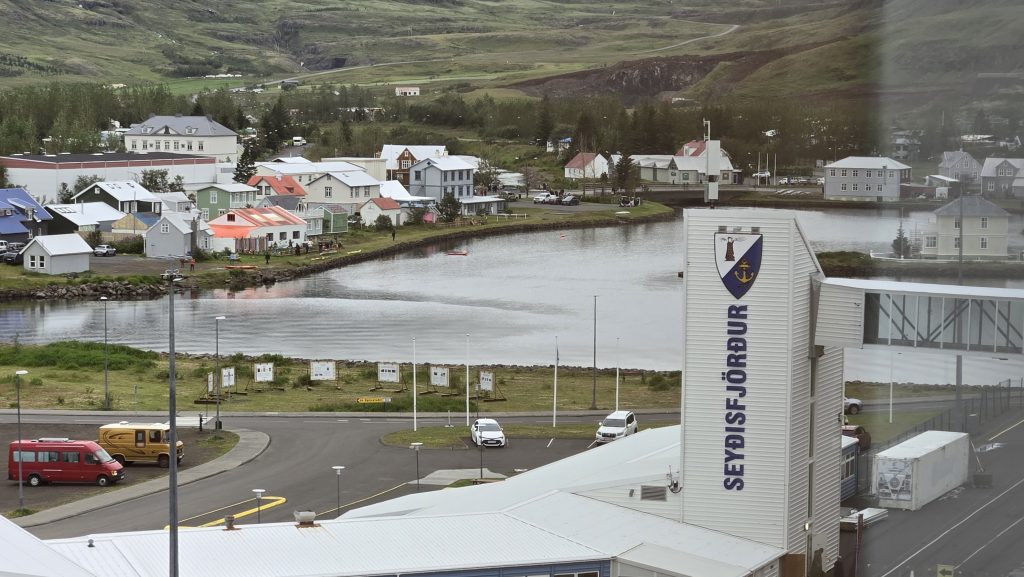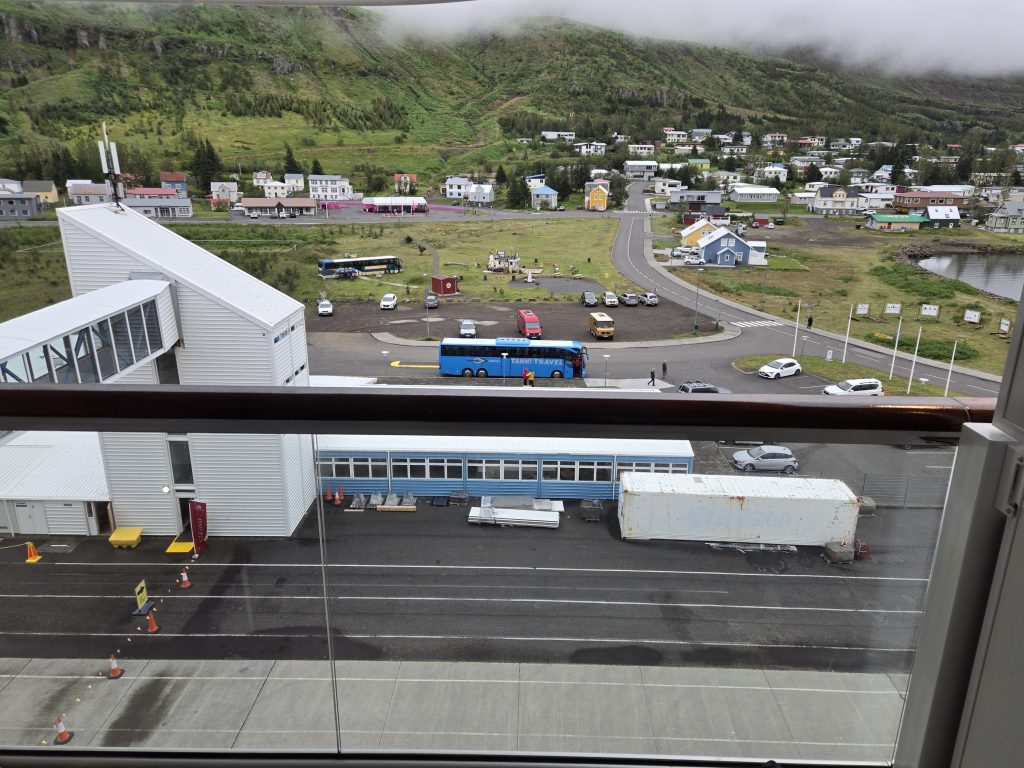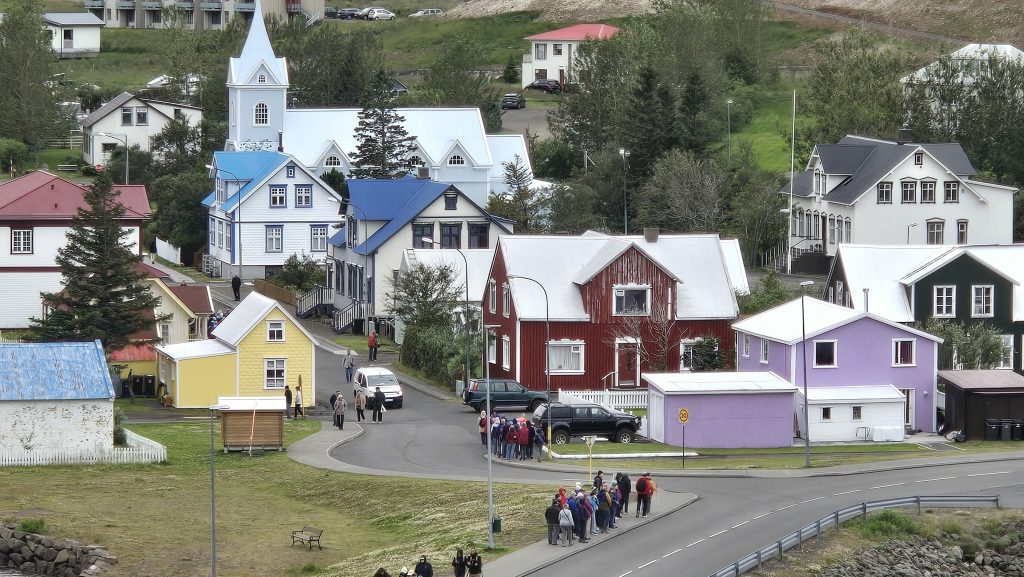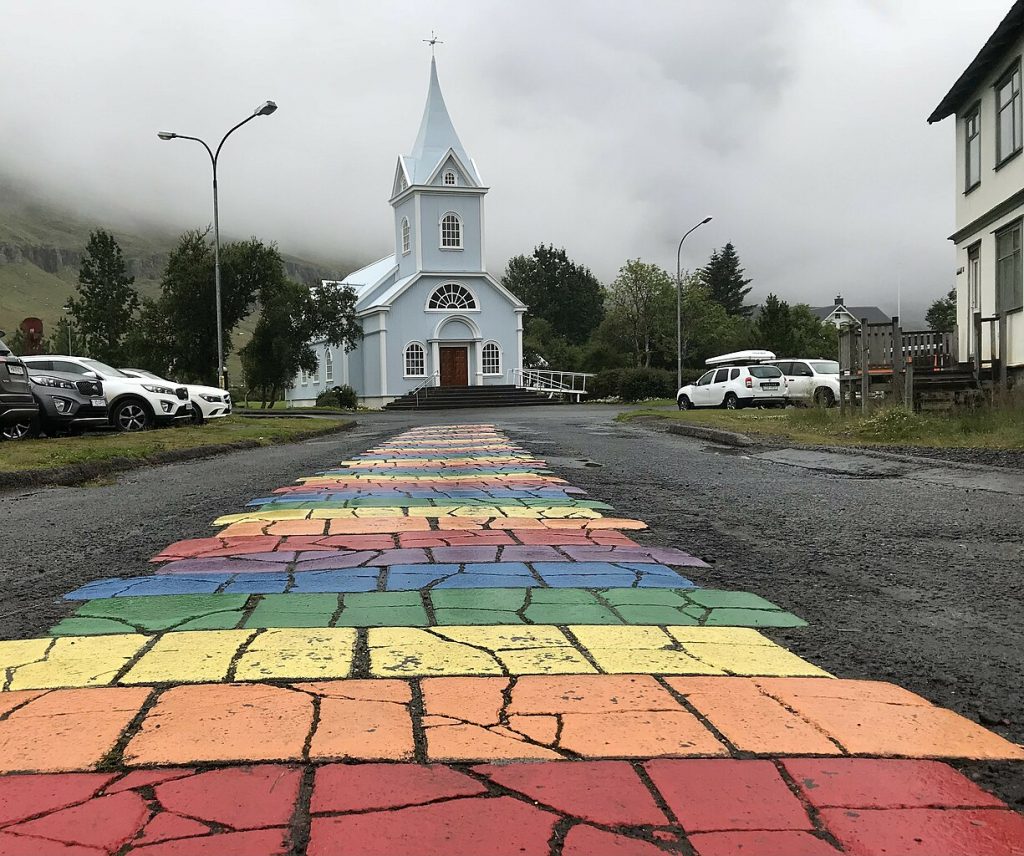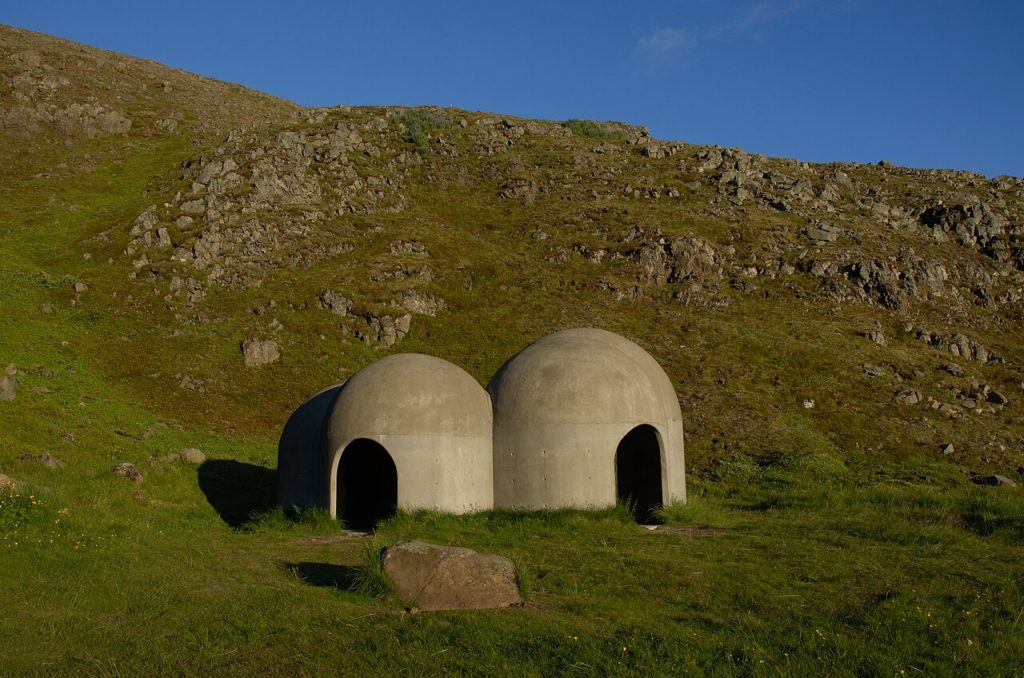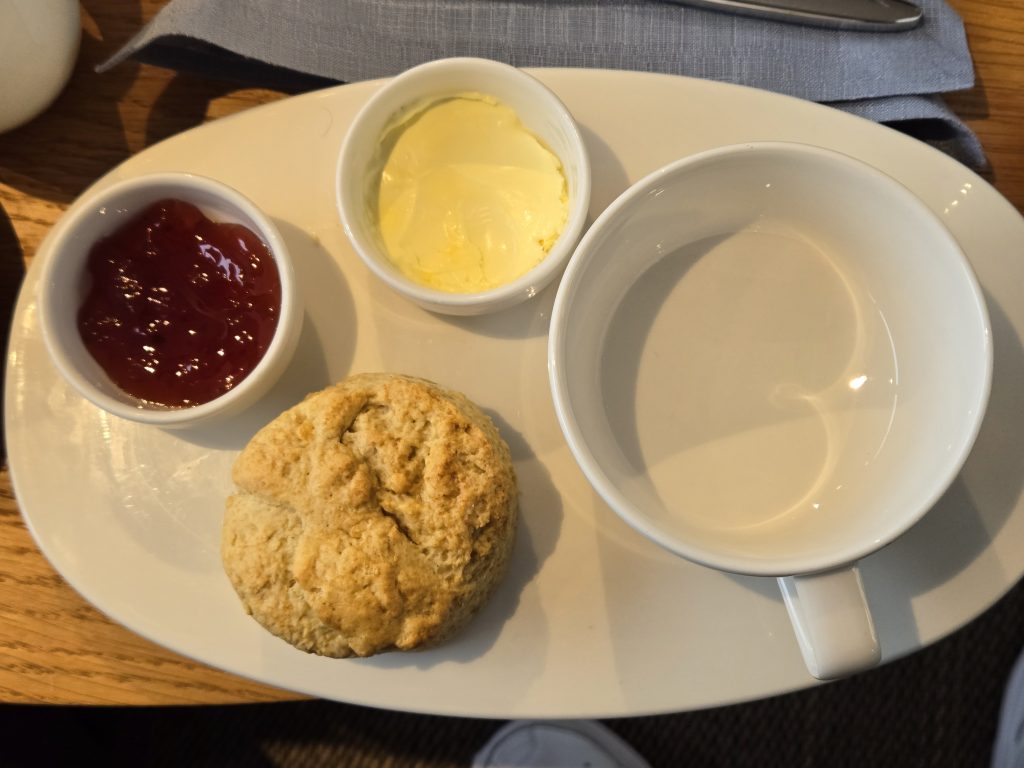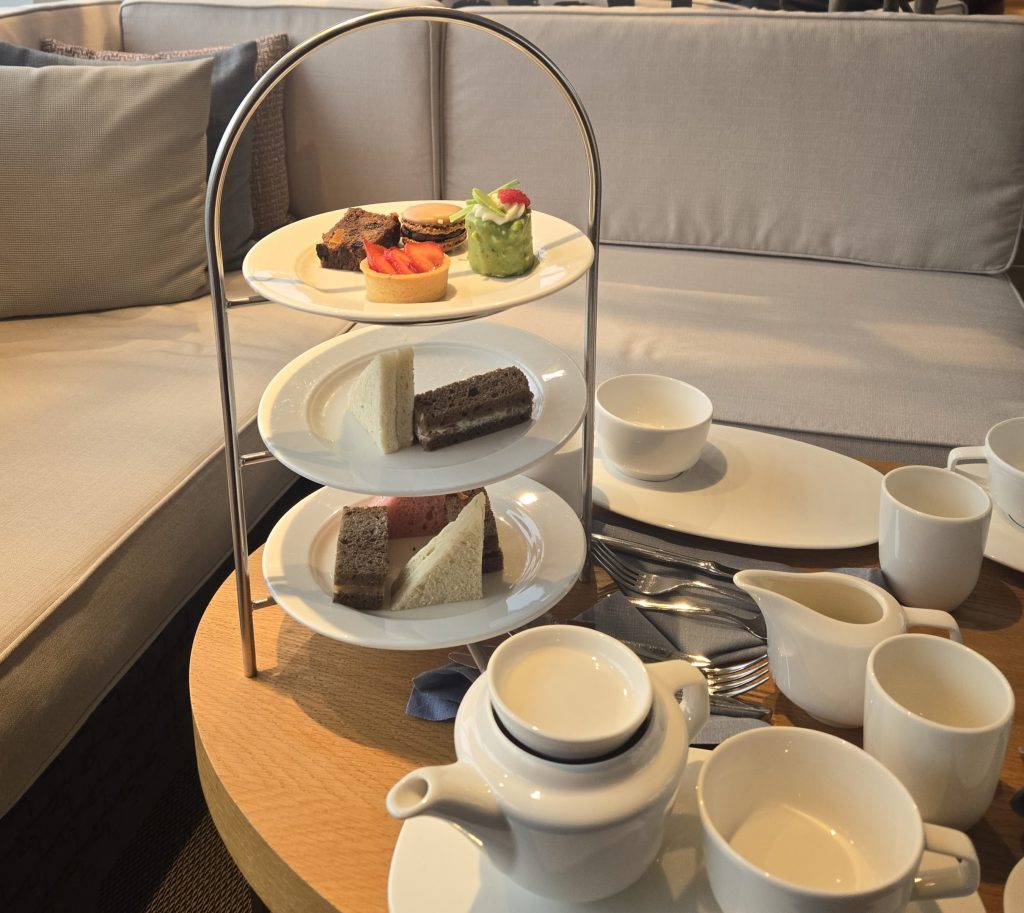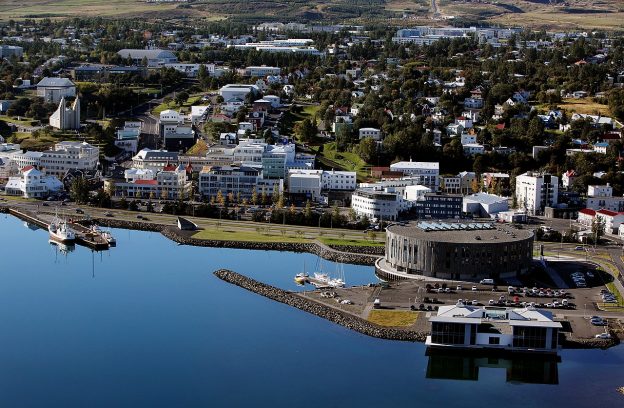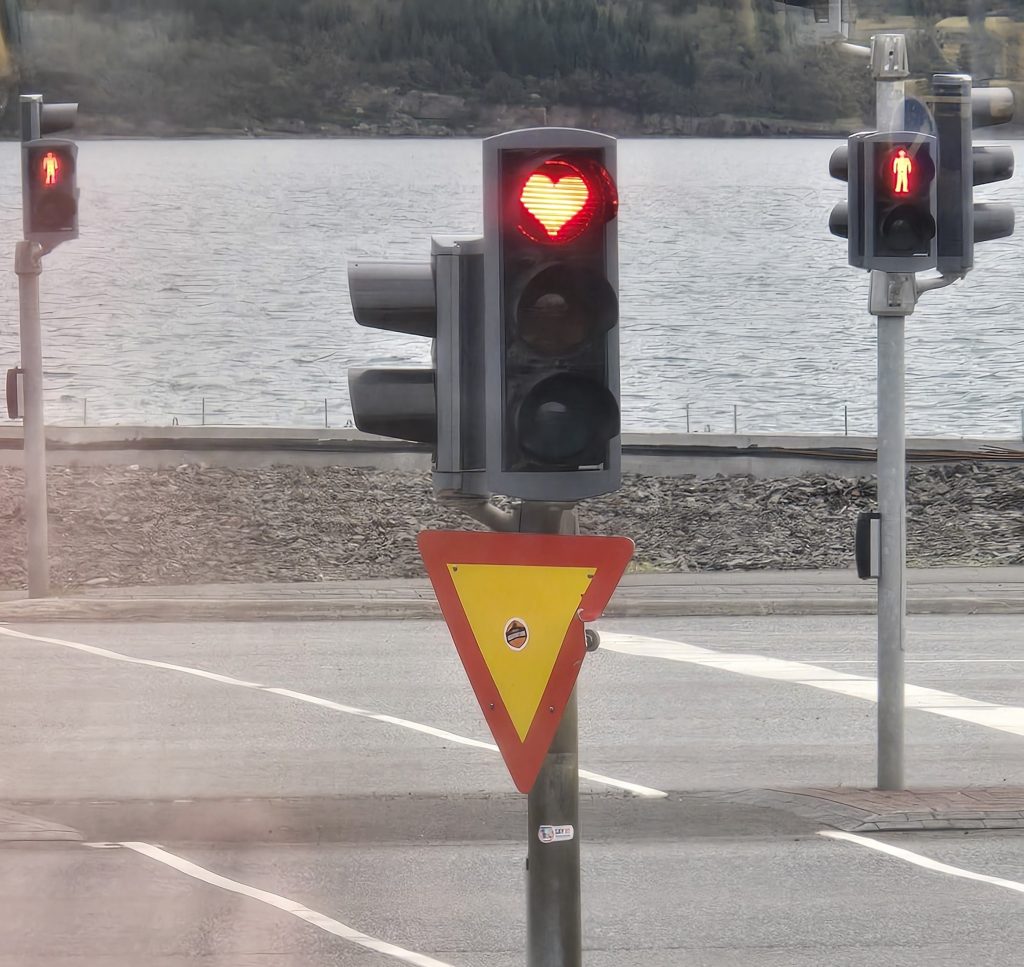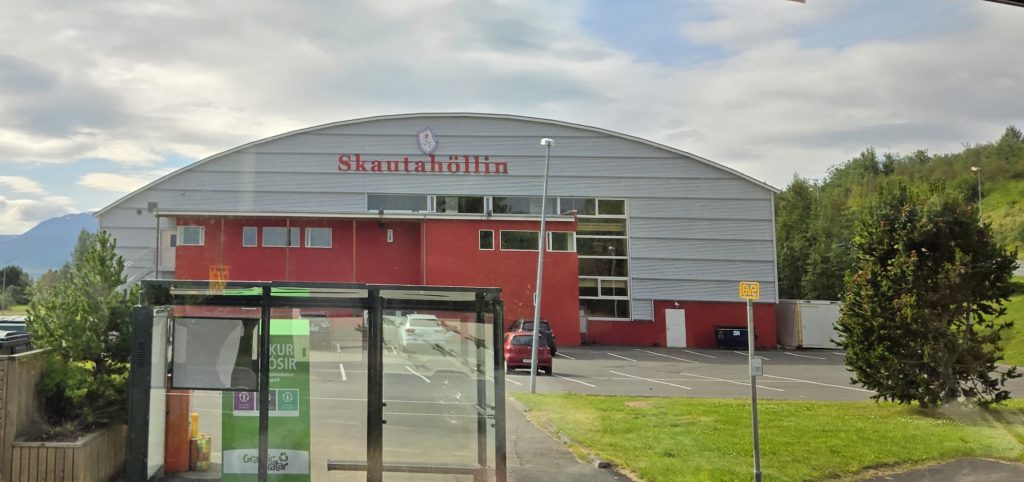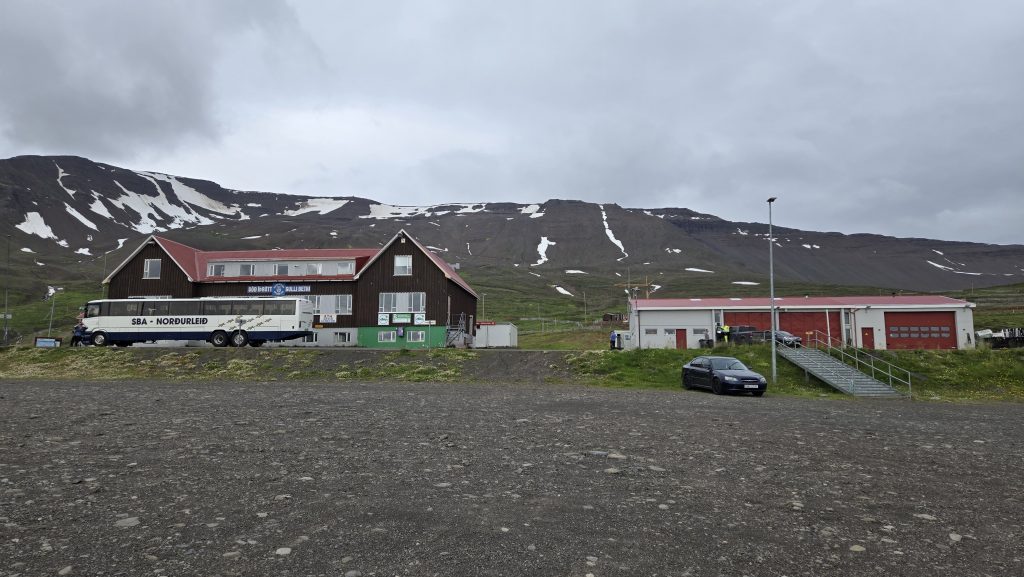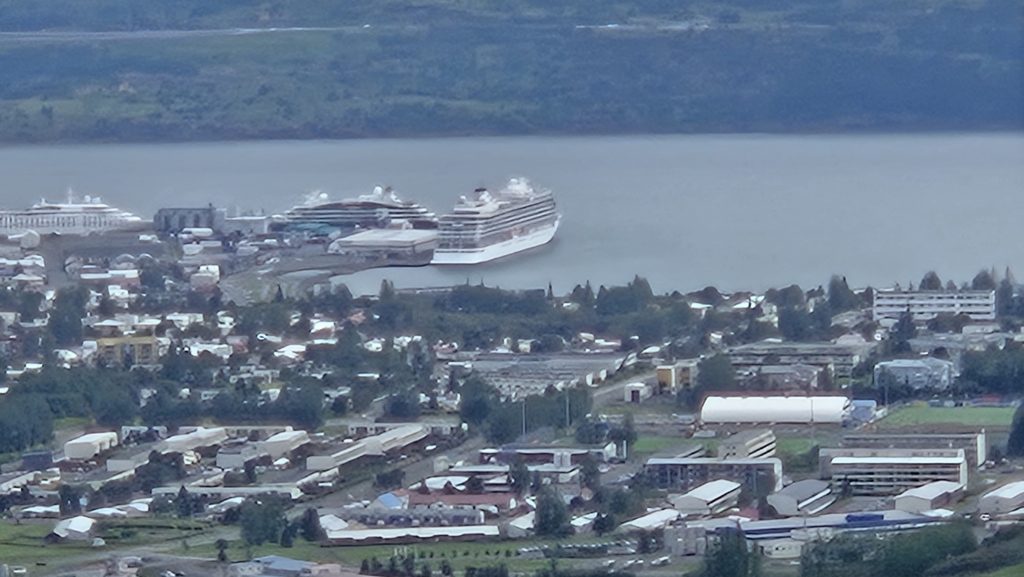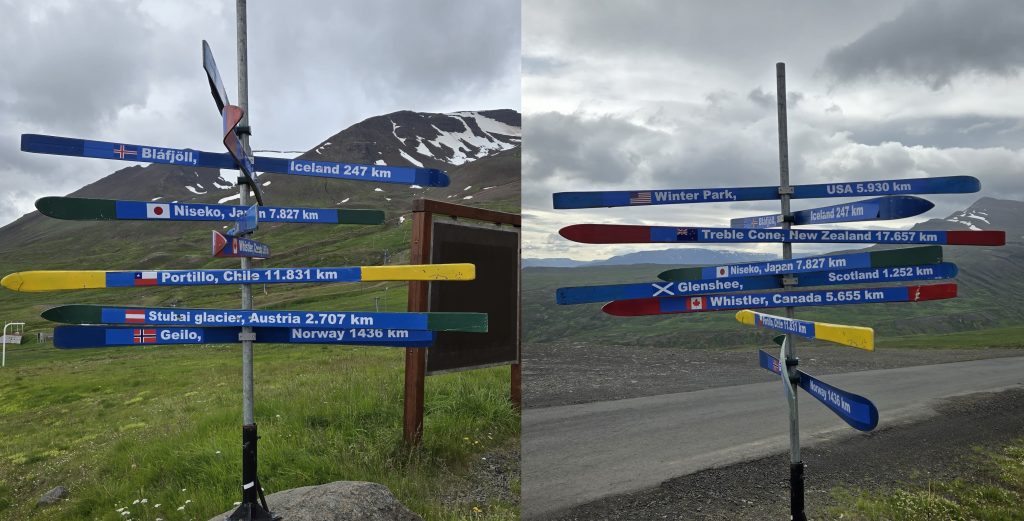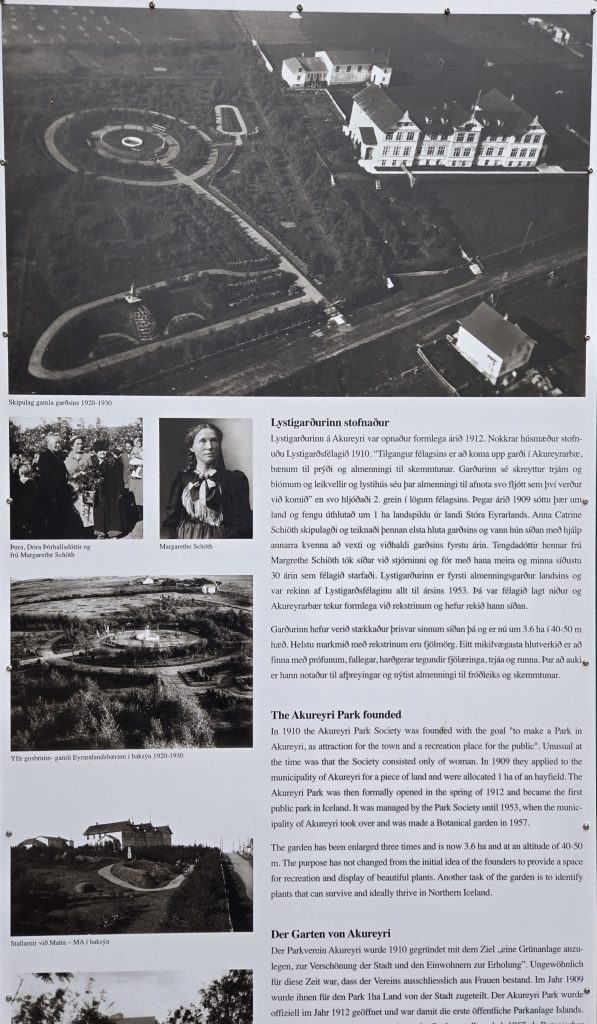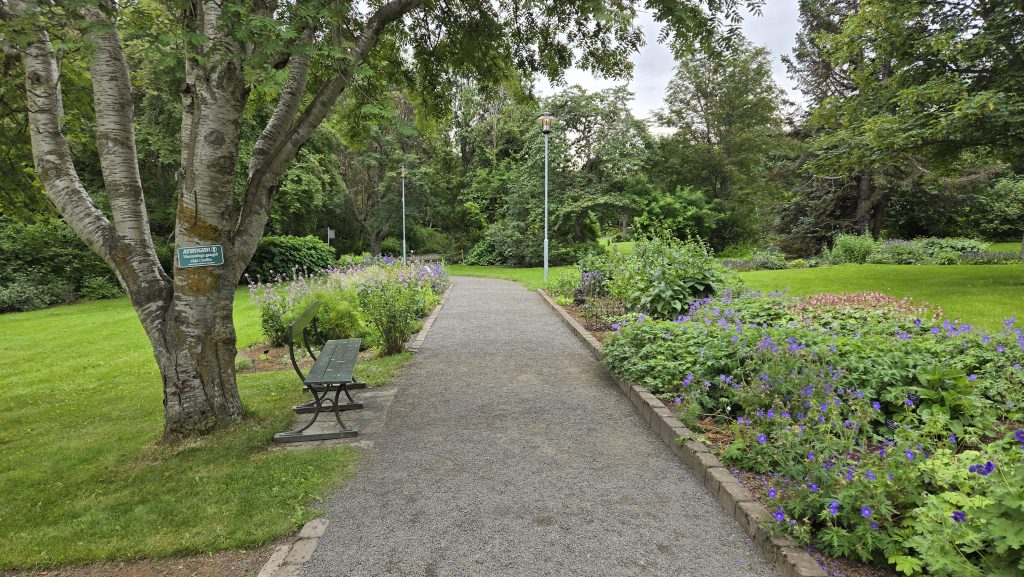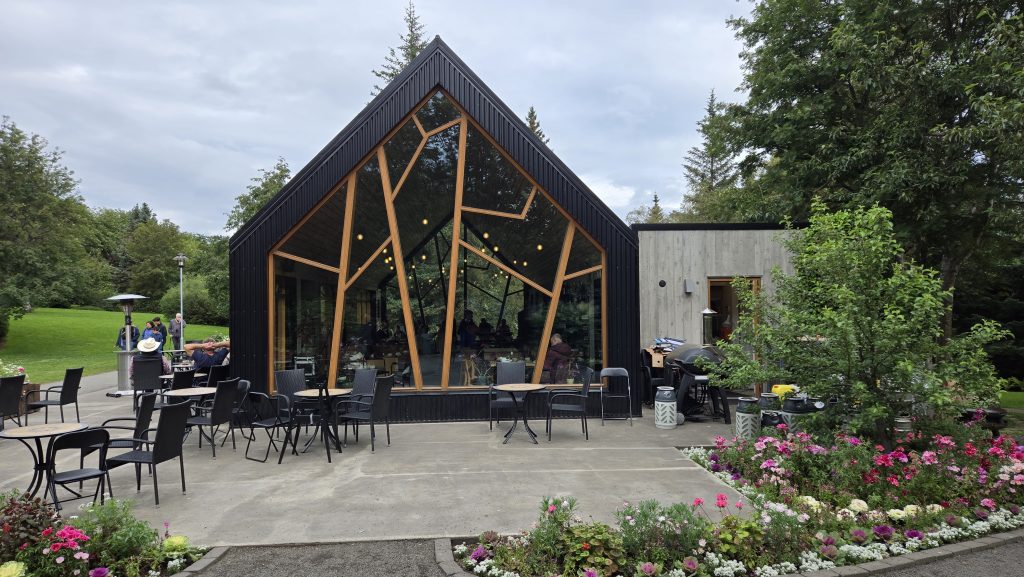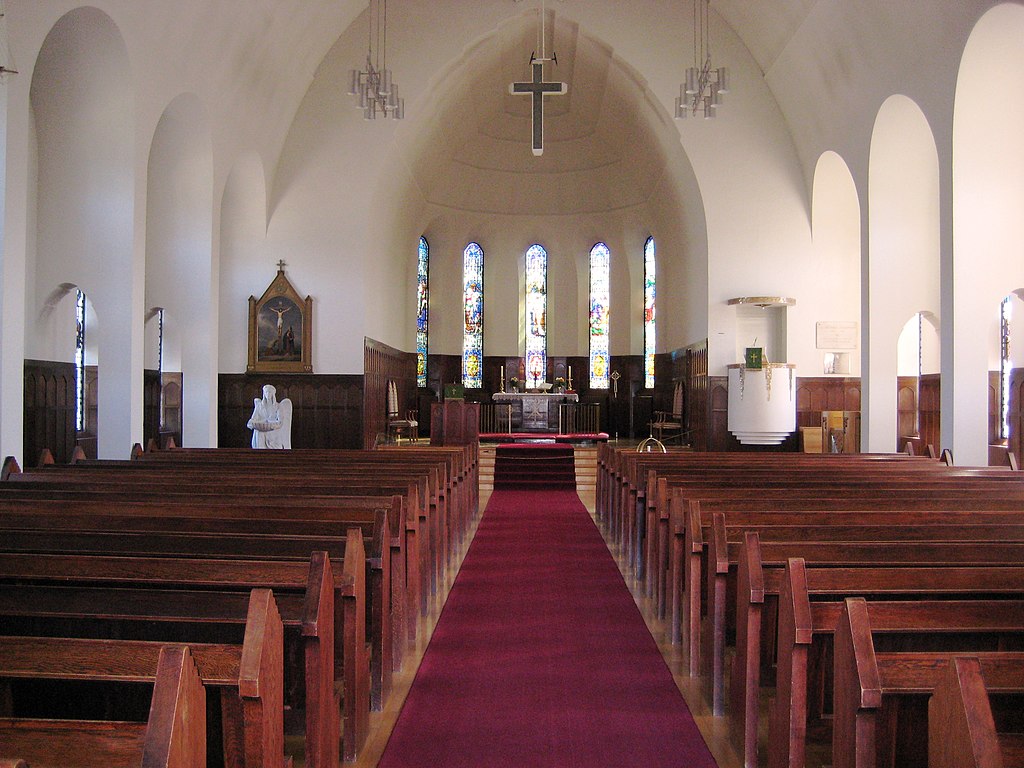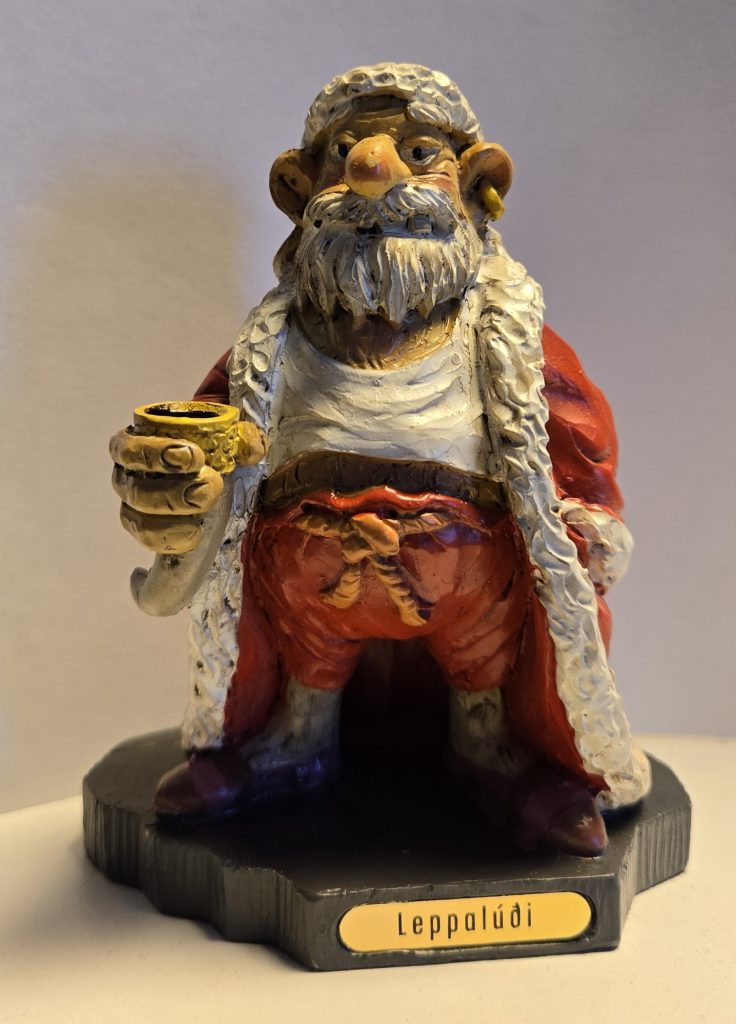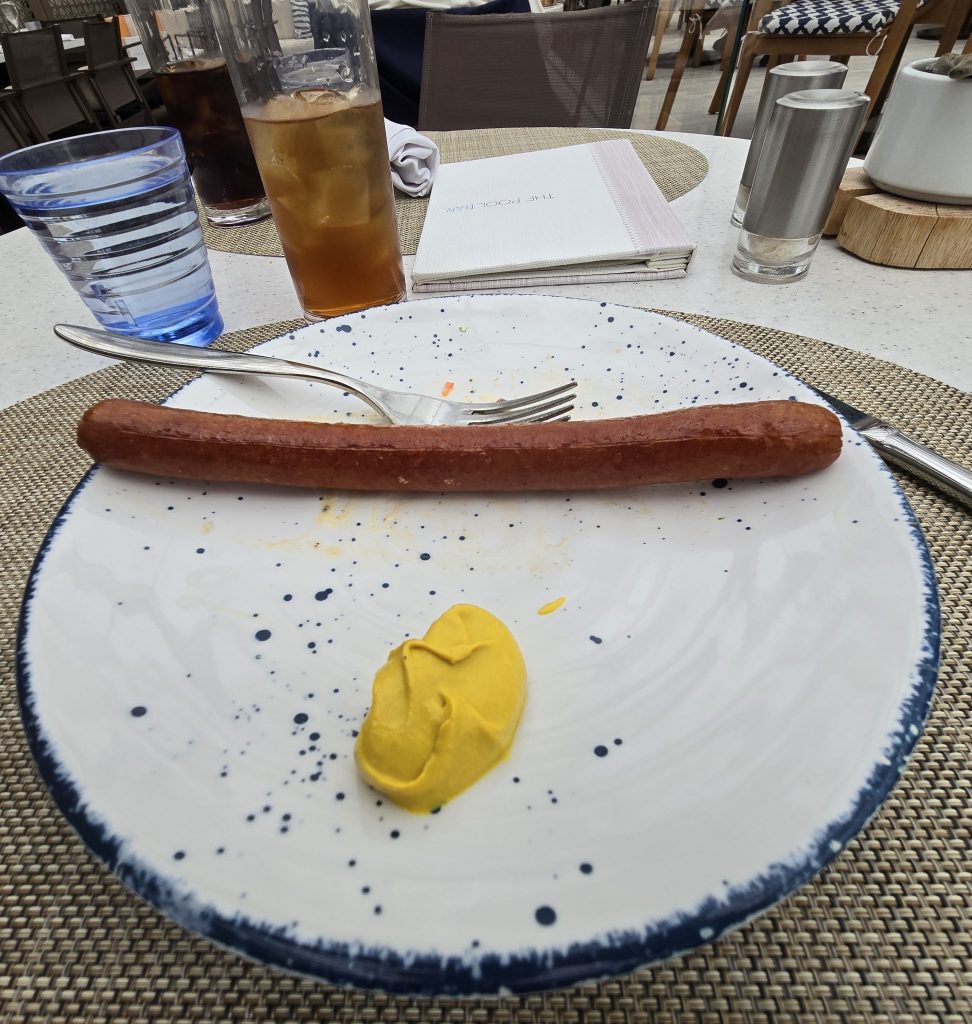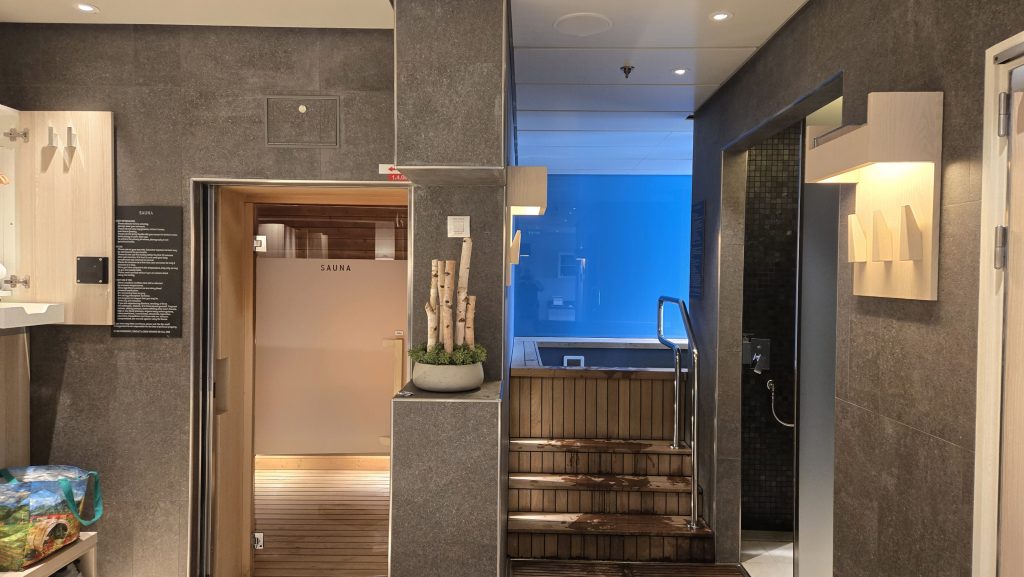Stuff that’s too short for a single blog post
Cruise Characters
We ran into several colorful characters on the ship, some of whom epitomized the Ugly American.
• A couple in the pool lounge area moved from one table for four to another table for four when their two friends arrived—using new place settings instead of taking their used ones with them—for no apparent reason.
• This couple decided to take up two tables meant for three people. I realize there were very few people in the area, but someone has to clean up and this just makes you look selfish and entitled.

We boarded one excursion bus with a group that said they were from Colorado, but with whose accents sounded Texan. We figured their money came from either oil or ranching. Grandma—who wore a full-length fur coat even though the temperature was in the upper 50s—and Grandpa were footing the bill for themselves, their two divorced sons, the sons’ two grandsons and the grandsons’ skanky girlfriends, one of whom wore a dark nose ring which looked like a crusty booger from a distance. One of the sons never parted with his white cowboy hat even while on the ship or at dinner. As we took our seats behind them, we overheard them talking about hunting. One remarked, “Just because it’s illegal, doesn’t make it wrong.”
Another good ol’ boy with money told a couple they’d befriended, “We did the Bangkok to Bali cruise last year!” That one starts at six grand per person for the bargain basement accommodations and up to around $20,000 for the Explorer Suites.
There was a couple on the Southern Coast of Iceland tour who were a walking advertisement for Outdoor Man. They had waterproof windbreakers with matching zippered rain pants and matching rain hats, full-length walking sticks, backpacks filled with granola bars and other munchies “for the journey.” They made a point of loudly proclaiming how well-prepared they were—”Gee, it’s a good think we have these rain pants!”—unlike us poor peasants who lacked their foresight—even though there was only a light, intermittent drizzle and our stops were 20 minutes max.
One couple could have been Santa and Mrs. Claus on vacation. He had a white beard and a long white ponytail; she had equally long full, white hair. We ran into them a couple of times in the hallway; they were very nice people! I wonder if the elves and reindeer got time off.

A cranky, old guy and his wife took up a table for six; it was littered with plates of half-eaten food. He asked one of the waitstaff for a glass of water with lemon but became irritable when it came with ice. “I said no ice, no ice!” The waiter brought him another one, sans ice, but the man never drank it. The next day the same dickhead set up his computer and paperwork on one of the video game tables in the Atrium instead of using a guest table.
We ran into an elderly couple several times. The husband, who was always very quiet, deserves to be nominated for sainthood. His wife complained about everything! She had neglected to make a reservation for the Chef’s Table and was complaining to the hostess because they couldn’t be seated. She complained to the waitstaff at dinner in the World Café about whatever irritated her. Several times we caught her annoying the people at Guest Services for something which I’d guess was relatively trivial. As a friend of mine says, “I just nod, smile and drive the car.”
Peg overheard someone talking on his phone to what she assumed was his financial advisor. “I know it’s only dropped $6 million, but do you think we should just dump it?” ONLY $6 million???
One couple at dinner raised our eyebrows. He looked like a college professor, balding with grey hair, in a dress shirt and sweater vest. She was much younger, probably early 20s and wore a plaid skirt, giving off a Japanese schoolgirl vibe, while sporting a silver band on her left hand. Was she his personal assistant or was he her sugar daddy? We’ll never know.
A passenger asked Guest Services if anyone had turned in his lost Air Pods.
“Where did you lose them?”
“Somewhere on the ship…or maybe on one of the excursions.”
(And you waited this long to ask???)
We were having coffee and tea at a table on Deck 1 just after breakfast. A very unhappy-looking woman sat across from us at the bar, downing cocktails at 9:30am. We wondered if the cruise was supposed to help a troubled relationship, much like some couples who think having a baby will bring them closer together. At least sailing was far cheaper than raising a kid for 18 years after the inevitable divorce.
Just for fun, I noted people who reminded me of celebrities:
• Ed O’Neill
• Rick Bayless
• Lorne Michaels
• a guy who could have been the love child of Bill Engvall and Scott Bakula.
Things I noticed
• Icelandair served 8 oz. soft drink cans.
• Iceland vendors use sturdy paper straws instead of plastic. No one complains.
• The drinks at the hot dog stand were 12 oz. No Big Gulps, and no one complains.
• All the toilets were wall-mounted, which makes cleaning bathroom floors much easier.
• Public toilet stalls have full-length doors.
• I found a can of Einstök Ölgerð’s White Ale at a local liquor store. It produces a very delicate head that resembles meringue
Guide to Icelandic Words and Pronunciation
The Icelandic alphabet has 32 letters.
• C, Q, W and Z are missing; Ð, Þ, Æ and Ö are unique additions.
• Ð and Þ are both th- sounds, but Ð is soft as in “thick”, while Þ is hard, as in “weather.”
• Æ/æ is pronounced “ayee”
• Ó/ó is pronounced “ou,” while Ö/ö is pronounced “oo.”
There are unique letter combinations and pronunciations:
• fnd and fnt are both pronounced “mt”, but the latter is softer.
• hv is pronounced “kv”
•ll is either “ll” as in villa, or “tl.”
You can find more information here: IPA Pronunciation Key for Icelandic
Icelandic names are often short words combined into one long one. The two rules for pronunciation are:
• break it down to the individual words
• stress the first syllable.
For instance. The volcano Eyjafjallajökull erupted in 2010, and pronouncing it confounded most English-speaking people. The components are eyja (“ay-ya”), “island,” fjalla (“fyal-la”), “mountains,” and jökull (“yo-kool”), glacier. So, Eyjafjallajökull means “island mountains glacier) and is pronounced “ay-ya-fyal-a-yo-kool.”
Some other common component words are:
• hvoll (“kvoll”) = hills
• völlur (“vut-lur) = field
• selja (“sell-ya”) = sell
• skóga (“sko-ah) = forests
• foss (“fohss) = waterfall
• urgöng (“uhr-gung”) = tunnel
• ís (“ees”) = ice
• fjörður (“fyor-thur”) = fjord
So, in English, Hvolsvöllur is “hill field”, Seljalandsfoss is “selling the land of waterfalls,” Skógafoss is “forest waterfall,” and Ísafjörður is “ice fjord.”
